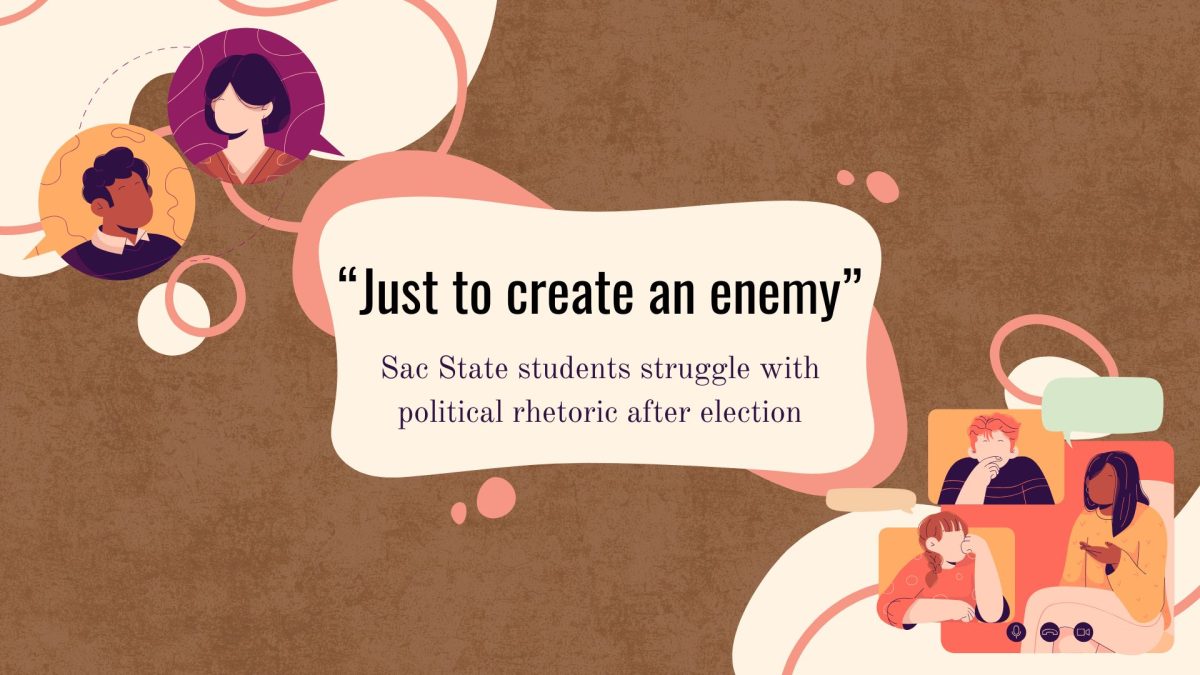Careers with an art degree
March 28, 2001
So you finally decided to go with your instinct and major in art because you were able to recognize that color, texture and shape is part of who you are. The next step is simply a matter of taking that passion and applying it to a career that will make you just as happy in your post-graduation life.
The Career Center suggests first analyzing yourself and digging into your roots to figure out what got you interested in art to begin with, and then visualizing what you can see yourself doing with your life and your career.
“A lot of times what I?ll spend time doing with a student is just brainstorming the variety of directions that they could go, depending on how involved in art they want to be, or what their focus is,” said Christye Peper of Sacramento State?s Career Center.
Many art students might initially look at the obvious when it comes to developing a career. For example, one might say, “I want to be a painter,” or, “I?m going to be a sculptor.” Unfortunately, according to Occupational Outlook Handbook, only the most successful fine artists are able to support themselves solely through the sale of their works and very often hold down other jobs while pursuing their dream.
This is why many put together portfolio careers when they?re interested in a creative field. They can focus on a commercial art-related job where they can learn and refine new skills and still focus on their passions on the side.
“For someone seeking a career in studio art, it is not a traditional job search. Often students will go to work as an apprentice or an assistant to someone who is either a sculptor or a painter and learn from that person,” Peper said. “I think that is a longer route and it sometimes takes a while to get established; so they often end up doing other things.”
Students who want to use their art background but don?t necessarily want to be a typical “artist” often look at jobs like a manufacturer representative for an art supply company, an art gallery manger, or a floral designer.
“People who are really looking for something very, very creative have to look behind what their initial impression of a company is, and go deeper to find out if they have creative types on staff,” Peper said.
When looking for a job, research a company and look beyond what you think the career field is; many companies need creative services to make their operation work. For example, the medical field needs medical illustrators, publishing houses need graphic designers and the movie industry needs title artists to develop lettering and icons for their productions.
Multimedia is a field that is growing quite rapidly and is in dire need of artists. Animators, graphic designers, video game designers and Web designers all fit in this category.
With technology emerging as it has been, the Career Center recommends that art students combine technology with art-based classes, like computer art, to help keep their career options open and current in this new age.
As with all majors, art students should get out and explore what the art field has to offer before graduation. Through internships, volunteering and networking, a more secure future will be established.
“The easiest thing to do is to just start walking around and going to second Saturday openings,” Peper said. “Go to all the different art venues and talk to people who own a gallery or other artists who are struggling to get their art shown.”
Going out of town to art cities like New York or San Francisco for art internships is also recommended to get an art career rolling. Taking risks and going beyond your local geography is one of the keys to success in this field.





























































































































